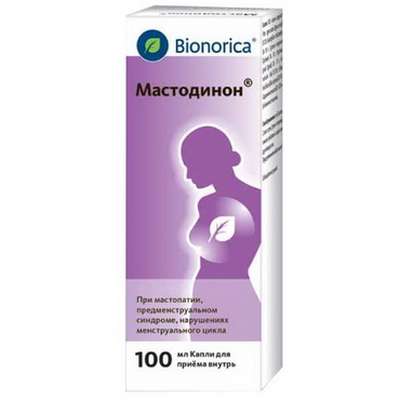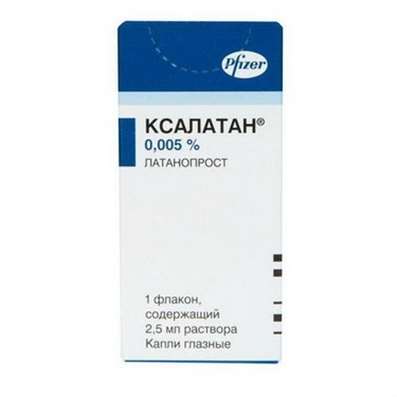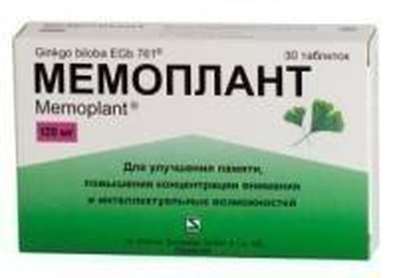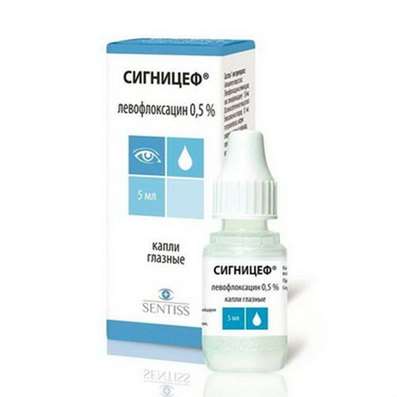Instruction for use: Lodoz
I want this, give me price
Active substance Bisoprolol + Hydrochlorothiazide
ATX Code C07BB07 bisoprolol in combination with thiazide
Pharmacotherapeutic group:
Hypotensive combined tool (beta1-blocker + diuretic) [Beta-blockers in combination]
Structure and Composition
Tablets, film-coated Table 1.
core
active substance:
bisoprolol hemifumarate 2.5 mg
6.25 mg hydrochlorothiazide
Excipients: magnesium stearate vs - 1 mg; crospovidone - 3 mg; corn starch, fine powder - 6,75 mg; pregelatinized cornstarch - 6.75 mg; MCC - 37.5 mg; calcium hydrogen phosphate anhydrous, fine powder - 75 mg
shell film: Opadry® Yellow (polysorbate 80 vs - 0,035 mg iron oxide yellow dye - 0.089 mg Macrogol 400 - 0.28 mg titanium dioxide - 0.891 mg, Valium 2910/3 - 1.1025 mg Valium 2910/6 - 1.1025 mg) - 3.5 mg
Tablets, film-coated Table 1.
core
active substance:
bisoprolol hemifumarate 5 mg
6.25 mg hydrochlorothiazide
Excipients: anhydrous colloidal silica - 0.5 mg; magnesium stearate vs - 2 mg; corn starch, fine powder - 10 mg; MCC - 10 mg; calcium hydrogen phosphate anhydrous, fine powder - 136.25 mg
shell film: Opadry® pastel pink (polysorbate 80 vs - 0.045 mg Iron oxide yellow dye (E172) - 0.0126 mg iron oxide red dye (E172) - 0.045 mg Macrogol 400 - 0.36 mg of titanium dioxide - 1.3329 mg Valium 2910/3 - 1.35225 mg Valium 2910/5 - 1.35225 mg) - 4.5 mg
Tablets, film-coated Table 1.
core
active substance:
bisoprolol hemifumarate 10 mg
6.25 mg hydrochlorothiazide
Excipients: anhydrous colloidal silica - 0.5 mg; magnesium stearate vs - 2 mg; corn starch, fine powder - 10 mg; MCC - 10 mg; calcium hydrogen phosphate anhydrous, fine powder - 131,25
shell film: Opadry® White (polysorbate 80 vs - 0,045 mg Macrogol 400 - 0.36 mg titanium dioxide - 1.40625 mg Valium 2910/3 - 1.34438 mg Valium 2910/5 - 1.34438 mg) - 4.5 mg
The drug forms
Tablets 2.5 mg + 6.25 mg: yellow, round, biconvex, film-coated, engraved with a heart on one side and "2.5" - on the other.
Tablets of 5 mg + 6.25 mg: pastel pink, round, biconvex, film-coated, engraved in a heart on one side and "5" - other.
Tablets of 10 mg + 6.25 mg: white, round, biconvex, film-coated, engraved in a heart on one side and "10" - to another.
pharmachologic effect
diuretic, a beta-adrenoliticheskoe.
pharmacodynamics
Lodoz is a combination of selective blocker bisoprolol β1-adrenoceptor and the thiazide diuretic hydrochlorothiazide.
Bisoprolol is a highly selective β1-blocker without sympathomimetic and membrane stabilizing activity. The mechanism of action of bisoprolol in hypertension associated primarily with a reduction in the level of renin in the blood plasma and heart rate.
Hydrochlorothiazide is a thiazide diuretic of the group with antihypertensive effect. Its diuretic effect is due to inhibition of the transport of sodium ions from the renal tubules into the blood, thus preventing its reabsorption thereby.
Pharmacokinetics
bisoprolol
Suction. Bisoprolol is almost completely (90%) absorbed from the gastrointestinal tract. Time to Cmax plasma -. 1-4 hours has a high bioavailability (88%) with a very low first-pass effect through the liver. Admission to the food does not affect bioavailability. For doses of 5 to 40 mg kinetics is linear.
Distribution. Communication with plasma proteins - about 30%, Vd - about 3 l / kg.
Metabolism. 40% of bisoprolol is metabolized in the liver. The metabolites are inactive.
Withdrawal. T1 / 2 of plasma is 11 hours. Renal and hepatic clearance of approximately comparable. Half of the administered dose excreted unchanged by the kidneys, as well as metabolites. Total clearance - about 15 l / h.
hydrochlorothiazide
Suction. After oral administration, about 80% of hydrochlorothiazide is absorbed from the gastrointestinal tract. Hydrochlorothiazide bioavailability ranges from 60 to 80%. Tmax in the blood plasma is about 4 hours (1.5-5 hours).
Distribution. Communication with plasma proteins - 40%.
Withdrawal. Hydrochlorothiazide is not metabolized and almost completely excreted unchanged by glomerular filtration and active tubular secretion. T1 / 2 of hydrochlorothiazide - about 8 hours.
In the case of renal insufficiency and cardiac hydrochlorothiazide reduced renal clearance, and T1 / 2 is increased. Elderly patients may also increase Cmax plasma levels.
Hydrochlorothiazide crosses the placenta and is excreted in breast milk.
Indications
Hypertension mild to moderate severity.
Contraindications
Hypersensitivity to bisoprolol, hydrochlorothiazide, other thiazides, sulfonamides or other components of the drug;
severe bronchial asthma and chronic obstructive pulmonary disease;
congestive heart failure or chronic heart failure (CHF) in the stage of decompensation, requires inotropic therapy;
cardiogenic shock;
syndrome sick sinus;
sinoatrial block;
AV blockade II and III level without pacemaker;
Symptomatic bradycardia (heart rate less than 50 beats / min.);
hypotension (Sad less than 100 mm Hg);
pheochromocytoma (without the simultaneous use of α-blockers);
severe peripheral circulatory disorders, including Reynaud's syndrome;
metabolic acidosis;
severe renal impairment (Cl creatinine <30 ml / min);
severe liver function;
Refractory hypokalaemia;
simultaneous use with sultopride;
age of 18 years (effectiveness and safety have been established).
Precautions: chronic heart failure, diabetes mellitus, significant fluctuations in blood glucose concentration, strict diet, AV block I degree, Prinzmetal angina, peripheral circulatory disorders, hypovolemia, liver dysfunction, hyperuricemia, psoriasis, hyperthyroidism, pheochromocytoma (during treatment with α adrenoblokatorami), water-electrolyte disorders (hyponatremia, hypokalemia, hypercalcemia), depression (including history), myasthenia gravis, old age, myopia (nearsightedness) and angle-closure glaucoma.
Pregnancy and breast-feeding
Apply this combination drug during pregnancy is not recommended, as it contains a diuretic of the thiazide group. Diuretics can cause fetoplacental ischemia with the attendant risk of fetal malnutrition. It is assumed that hydrochlorothiazide can cause neonatal thrombocytopenia.
At present it is not known whether bisoprolol is derived from breast milk. Diuretics group of thiazides are excreted in breast milk, so breast-feeding during treatment with Lodoz not recommended. Hydrochlorothiazide can inhibit the secretion of breast milk.
Side effects
The side effects are classified according to frequency of occurrence: very common (≥1 / 10); commonly (≥1 / 100, <1/10); uncommon (≥1 / 1000, <1/100); rare (≥1 / 10,000, <1/1000); very rare (<1/10000), including isolated reports; the frequency has not been established (can not be calculated from the available data).
From the blood and lymphatic system: rarely - leukopenia, thrombocytopenia; very rarely - agranulocytosis.
On the part of metabolism and nutrition: rarely - anorexia, hyperglycemia, hyperuricemia, a violation of water-electrolyte balance (particularly hypokalemia and hyponatremia, hypomagnesemia and chloropenia and hypercalcaemia); very rarely - metabolic alkalosis.
Mental disorders: rarely - depression, insomnia; rare - hallucinations, nightmares.
From the nervous system: often - dizziness *, headache *.
From a sight organ: seldom - a decrease in the production of tear fluid (it should be taken into account when wearing contact lenses), blurred vision; very rarely - conjunctivitis.
On the part of the ear and labyrinth disorders: rarely - hearing impairment.
From the heart: rarely - bradycardia, disturbance of AV conduction, worsening symptoms of heart failure flow.
On the part of the vessels: often - cooling sensation or numbness in the extremities; rarely - orthostatic hypotension; rarely - fainting (syncope).
The respiratory system, organs, thoracic and mediastinal disorders: rarely - bronchospasm in patients with asthma or airway obstruction in history; rarely - allergic rhinitis; the frequency has not been established - interstitial lung disease.
From the digestive system: often - nausea, vomiting, diarrhea, constipation; rare - abdominal pain; very rarely - pancreatitis.
On the part of the liver and biliary tract: rarely - hepatitis, jaundice.
Skin and subcutaneous tissue disorders: rarely - hypersensitivity reactions, such as itchy skin, blood sudden flushing, skin rash, fotodermatit, purpura (purpura), hives; very rare - alopecia, cutaneous lupus erythematosus. β-blockers may exacerbate psoriasis flow or cause psoriasiform rash.
On the part of the musculoskeletal and connective tissue disorders: rarely - muscle weakness, muscle cramps.
From the genitals and breast: rarely - a violation of potency.
General disorders and administration site reactions: often - fatigue *; infrequently - asthenia; very rarely - pain in the chest.
The impact on the results of laboratory and instrumental studies: Infrequent - increased concentration of amylase, reversible increase in creatinine concentration in serum urea, increase the concentration of triglycerides and cholesterol, glycosuria; rarely - increased activity of ACT and ALT.
You must inform the doctor about all side effects occur.
Interaction
contraindicated combinations
Sultopride: simultaneous use with bisoprolol may increase the risk of ventricular arrhythmias.
Not recommended combinations
Lithium: Hydrochlorothiazide may enhance the cardiotoxic and neurotoxic effects of lithium, reducing the removal of the last of the body.
CCB verapamil type and to a lesser extent diltiazem: while the use of bisoprolol may lead to a decrease in myocardial contractility and AV conduction disorders. In particular, in / with the introduction of verapamil in patients receiving β-blockers may lead to severe hypotension and AV blockade.
Antihypertensive drugs central action (such as clonidine, methyldopa, moxonidine, rilmenidine): while the use of the drug can lead to Lodoz slowing heart rate and reducing cardiac output and to vasodilatation due to the reduction of the central sympathetic tone. However, do not interrupt the treatment without consulting your doctor. Abrupt withdrawal, particularly to cancellation β-blockers may increase the risk of rebound hypertension.
Combinations to be used with caution
Dihydropyridine CCBs derivatives (eg, nifedipine, amlodipine): while the use of bisoprolol may increase the risk of hypotension. In patients with heart failure can not eliminate the risk of further deterioration of the ventricular function.
Antihypertensives and other antihypertensive agents with the possible effect (tricyclic antidepressants, barbiturates, phenothiazine derivatives, baclofen) in combination with a drug Lodoz may increase the risk of hypotension.
ACE inhibitors (eg captopril, enalapril), angiotensin II receptor antagonists: the risk of a significant reduction in blood pressure and / or acute renal failure at the start of treatment with ACE inhibitors or angiotensin II receptor antagonists in patients with hyponatremia (especially in patients with renal artery stenosis). If prior diuretic called hyponatremia, you must either stop taking the diuretic for three days before the start of treatment with ACE inhibitors or begin treatment latest in small doses, gradually increasing them.
Class I antiarrhythmics (eg quinidine, disopyramide, lidocaine, phenytoin, flecainide, propafenone): while the use of bisoprolol may reduce AV conduction and enhance the negative inotropic effect.
Class III antiarrhythmics (eg amiodarone): while the use of bisoprolol may increase the violation of AV conduction.
Antiarrhythmic agents that can cause tachycardia of the type "pirouette» (IA class, such as quinidine, gidrohinidin, disopyramide and Class III, eg amiodarone, sotalol, dofetilide, Ibutilide): hypokalemia can trigger the occurrence of ventricular arrhythmias, including tachycardia of the type "pirouette".
Other agents that can cause tachycardia of the type "pirouette" (eg astemizole, erythromycin for the on / in the introduction, halofantrine, pentamidine, sparfloxacin, terfenadine, vincamine, some neuroleptic): hypokalemia can trigger the occurrence of ventricular arrhythmias, including tachycardia of the type "pirouette".
M-holinoadrenomimetiki: while the use of bisoprolol may increase the violation of AV conduction and increase the risk of bradycardia.
β-blockers for topical application (eg eye drops for glaucoma treatment) may increase the systemic effects of bisoprolol (lowering blood pressure, slowing of the heart rate).
The insulin or hypoglycemic agents for oral administration: hypoglycemic effect may be enhanced. Blockade of β-adrenoceptors may mask symptoms of hypoglycemia such as tachycardia. Such interactions are more likely when using a nonselective β-blockers.
Funds for general anesthesia may increase the risk cardiodepressive action of bisoprolol, resulting in hypotension (see "Special Instructions".).
Cardiac glycosides: while the use of bisoprolol may increase the duration of the pulse, to cause bradycardia. In the event of hypokalemia and / or hypomagnesemia of hypersensitivity may occur during treatment with myocardial Lodoz to cardiac glycosides, which leads to increased effects and side effects of glycosides.
NSAIDs: may reduce the antihypertensive effect of bisoprolol. In patients with hypovolemia simultaneous use of NSAIDs can initiate acute renal failure.
β-agonists (eg isoprenaline, dobutamine): simultaneous use with the drug Lodoz may reduce the effect of both drugs.
Adrenomimetiki acting on the β- and α-adrenoceptors (eg norepinephrine, epinephrine) in combination with bisoprolol may increase vasoconstrictor effects of these agents arising from the participation of α-adrenergic receptors, resulting in increased blood pressure, and exacerbating intermittent claudication. Such interactions are more likely when using a nonselective β-blockers.
Drugs that promote excretion of potassium (eg corticosteroids, ACTH), tetrakozaktid, carbenoxolone, amphotericin B, or laxatives, furosemide): while the use of hydrochlorothiazide increases potassium loss.
Methyldopa: in some reports described hemolysis due to the formation of antibodies to the hydrochlorothiazide.
Drugs that reduce the concentration of uric acid in the blood plasma, the effect of these drugs may be weakened when the simultaneous use of hydrochlorothiazide.
Cholestyramine, colestipol: reduced absorption of hydrochlorothiazide.
Iodine-containing contrast media: in case of dehydration caused by diuretics, increased risk of acute liver failure, especially when taking high doses of iodinated contrast media.
Calcium salts: risk of hypercalcemia while the use of hydrochlorothiazide due to lower renal excretion of calcium.
Potassium-sparing diuretics: risk of hypo- or hyperkalemia while the use of hydrochlorothiazide. The latter condition most often occurs in diabetes or liver failure.
Combinations to be considered
Mefloquine: while the use of bisoprolol may increase the risk of bradycardia.
MAO inhibitors, except MAO-B inhibitors: may potentiate the antihypertensive effect of .beta.-blockers. Concomitant use can also lead to the development of hypertensive crisis.
SCS: reduce the antihypertensive effect of the drug (due to the delay caused by GCS water and sodium in the body).
Dosing and Administration
Inside.
Lodoz taken orally 1 time a day, in the morning before breakfast, during or after it. The tablets should be swallowed whole, without chewing, with a small amount of liquid.
The dose should be selected individually.
The initial dose corresponds to Table 1. Containing 2.5 mg of bisoprolol + hydrochlorothiazide 6.25 mg, 1 time per day.
With the lack of expression of the therapeutic effect of the dose can be increased up to 1 table. Containing 5 mg of bisoprolol + hydrochlorothiazide 6.25 mg, 1 time per day. If the therapeutic effect was not enough, you can increase the dose of the drug to Lodoz Table 1., Containing 10 mg of bisoprolol + hydrochlorothiazide 6.25 mg, 1 time per day.
The duration of treatment. Treatment with Lodoz is usually long-term therapy.
Patients with impaired hepatic or renal function. No dose adjustment is required in the case of abnormal liver or renal function Mild to moderate (Cl creatinine> 30 ml / min).
Elderly patients. Dose adjustment is not normally required.
Children. Data on drug use among children is not, so it is not recommended for use in children under the age of 18 years.
Overdose
symptoms
The most common symptoms of an overdose of β-adrenoblokatdrami: bradycardia, marked reduction in blood pressure, AV block, bronchospasm, acute cardiac insufficiency and hypoglycaemia.
Sensitivity to a single high dose of bisoprolol reception varies widely among individual patients, and probably with heart failure patients have high sensitivity.
Clinical manifestations of acute or chronic overdose of hydrochlorothiazide due to a large loss of fluid and electrolytes.
The most common symptoms of hydrochlorothiazide overdose: dizziness, nausea, somnolence, hypovolemia, hypotension, hypokalemia.
Treatment
In case of overdose, you first need to stop taking the drug, gastric lavage, appoint absorbent agent and supportive symptomatic treatment start.
In severe bradycardia - in / atropine. If the effect is insufficient, you can enter with caution agent with positive chronotropic effect. Sometimes it may require temporary staging an artificial pacemaker.
In severe hypotension - in / in a plasma-purpose solutions and vasopressors.
When AV block II or III level - patients should be under constant supervision and be treated with β-agonists; possible use of epinephrine. If necessary - setting an artificial pacemaker.
When exacerbation of heart failure - in / in the introduction of diuretics, drugs with positive inotropic effect and vasodilators.
When bronchospasm - appointment of bronchodilators, β2-agonists and / or aminophylline.
When hypoglycemia - in / in a dextrose (glucose).
The limited evidence that bisoprolol only to a small extent appear in hemodialysis. The degree of hydrochlorothiazide elimination by hemodialysis has not been established.
special instructions
Precautions related to bisoprolol
Cessation of therapy. Do not suddenly stop treatment, particularly in patients with CAD. The dose should be reduced gradually over 2 weeks. If necessary, at the same time initiate appropriate therapy, warning angina.
Asthma and COPD. In patients with mild asthma or COPD treatment is initiated with a minimum dose. Pre conduct functional respiratory tests. When symptomatic manifestations of asthma or COPD is shown broihodilatiruyuschih simultaneous use of funds.
Patients with asthma may increase airway resistance, which requires higher doses of β2-agonists.
CHF. Patients with compensated heart failure, which shows the treatment of β-blockers, should start treatment with the lowest dose of the drug, gradually increasing the dose, under the supervision of a physician.
Bradycardia. When heart rate less than 50-55 u. / Min at rest and in patients who have marked symptoms associated with bradycardia, you need to decrease the dose.
AV block of I degree. Given the negative effect of β-dromotropic adrenobl6kator, they should be used with caution in patients with AV blockade of I degree.
Prinzmetal angina. β-blockers may increase the frequency and length of vasospastic episodes in patients with Prinzmetal angina. β1-selective blockers can be used in mild and mixed forms of angina Prinzmetal, while the use of vasodilators.
Peripheral circulatory disorders. In patients with peripheral circulatory disorders or Raynaud's syndrome β-blockers may exacerbate disease progression.
Pheochromocytoma. Patients with pheochromocytoma should not be administered until Lodoz until were treated α-adrenoblokaterami. Careful monitoring of blood pressure.
Elderly patients. Treatment should be carried out under the close supervision of the patient's condition (see. The water-electrolyte balance).
Diabetes. Patients taking Lodoz should be warned about the possibility of hypoglycemia and the need for regular monitoring of blood glucose concentration at the beginning of treatment. Symptoms of significant decrease of the concentration of glucose (hypoglycemia), such as tachycardia, palpitations and sweating may be masked.
Psoriasis. Therapy β-blockers may exacerbate psoriasis. Bisoprolol can be assigned only when necessary.
Allergic reactions. Patients who have a history of anaphylactic reactions, regardless of their origin, in particular when using iodinated contrast agents or performing desensitizing therapy, β-blockers treatment can aggravate the occurrence of these reactions, and cause the development of resistance to epinephrine treatment (epinephrine) at conventional doses .
General anesthesia. In general anesthesia β-adrenoceptor blockade reduces the risk of arrhythmia and myocardial ischemia during induction and intubation, as well as postoperatively. Currently, it is recommended to continue β-blocker therapy intraoperatively. Anesthesiologist should take into account the risk of .beta.-adrenergic blockade because of the potential for interactions with other drugs that can cause bradyarrhythmia, suppression of reflex tachycardia and decreased reflex ability to compensate for blood loss. If you want to stop therapy with Lodoz before surgery, this should be done gradually and completed within 48 hours prior to general anesthesia.
Thyrotoxicosis. In the treatment with bisoprolol the symptoms of a thyrotoxicosis may be masked.
Strict diet. Lodoz should be used with caution in patients who observe a strict diet.
Combination with verapamil, diltiazem or bepridilom. Such combinations require careful patient monitoring and ECG, especially in elderly patients and early treatment.
Precautions related to hydrochlorothiazide
In patients with impaired liver function, thiazide diuretics and their derivatives may cause hepatic encephalopathy. In this case, you should immediately stop taking the drug.
Water and electrolyte balance. Prolonged use of the drug should regularly monitor Lodoz electrolytes, serum (particularly potassium, sodium, calcium), urea and creatinine, serum lipids (cholesterol and triglycerides), and uric acid, glucose.
Long-term use of thiazide diuretics may lead to disruption of water and electrolyte balance, particularly hypokalemia and hyponatremia, and hypomagnesemia and chloropenia, and hypercalcemia.
The sodium content in the blood plasma. Before the start of therapy and thereafter requires regular monitoring of sodium in the blood. Diuretics can induce hyponatremia, in some cases with serious consequences.
Reducing the sodium content in the beginning of treatment may be asymptomatic, therefore, requires regular monitoring, special attention is required, patients at high risk, such as elderly patients, patients with liver cirrhosis.
The potassium content in the blood plasma. The greatest risk associated with taking thiazide and thiazide diuretics, potassium is lost, leading to hypokalemia (<3.5 mmol / l).
A more frequent potassium control in the blood of high-risk patients, such as elderly and / or malnourished and / or taking several drugs at the same time, as well as in patients with coronary artery disease or heart failure, in which hypokalemia increases the risk of arrhythmias increase the toxicity of cardiac glycosides.
Also at risk are those with the QT interval increased, both congenital and acquired. Hypokalemia (as well as bradycardia) potentiates the development of severe arrhythmia, including tachycardia of the type "pirouette".
The first definition of the content of potassium in the blood plasma must be held during the first week of therapy with Lodoz.
The calcium content in the blood plasma. Thiazides may decrease urinary excretion of calcium, which leads to low temporal and hypercalcemia. Significant hypercalcaemia may be associated with nediagnostitsirovannym hyperparathyroidism. Before examining the function of the parathyroid glands thiazide treatment should be discontinued.
The concentration of glucose in the blood. Necessary to control blood glucose levels in patients with diabetes, especially in the case of hypokalemia.
Uric acid. In patients with hyperuricemia increased risk of gout attacks - dose should be adjusted individually.
Renal function. Thiazide diuretics are effective in normal or mildly reduced kidney (Cl creatinine> 25 mg / ml or 220 mmol / l, adults).
Hypovolemia in addition to sodium and fluid loss arising from the use of diuretics at the beginning of therapy leads to a reduction of glomerular filtration, which in turn leads to an increase in the content of urea and creatinine in the serum of patients with normal renal function.
Temporary impairment of renal function occurs without consequence in patients with normal renal function. In patients with impaired renal function may aggravation of existing disorders.
Combination with other antihypertensive agents. In the case of drug administration with another antihypertensive agent recommended dose reduction, at least at the beginning of treatment.
Photosensitivity. The use of thiazide diuretics may cause photosensitivity reactions. In the event of such reactions, it is recommended to protect sensitive areas from sunlight or artificial UV radiation. In severe cases may require discontinuation of treatment.
Myopia (nearsightedness) and angle-closure glaucoma. Hydrochlorothiazide, a sulfonamide may cause idiosyncratic reactions, manifested as acute transient myopia and acute angle-closure glaucoma. Symptoms include a sharp decrease in visual acuity or pain in the eye and, as a rule, occur in the period of from several hours to several weeks from the start of treatment. No treatment angle-closure glaucoma can lead to irreversible vision loss. The first step in treatment must stop taking hydrochlorothiazide as soon as possible. If the IOP remains uncontrolled, may require prompt medical or surgical treatment. Risk factors for angle-closure glaucoma is an allergic reaction to penicillin or derivatives of sulfanilamide in history.
Precautions related to bisoprolol and hydrochlorothiazide
Athletes. Athletes should be informed that this drug contains the active substance, which may give positive results in the doping tests.
Effects on ability to drive vehicles and complex mechanisms. Lodoz The drug does not affect the ability to drive vehicles. However, due to individual body's response to drug therapy Lodoz ability to drive vehicles or operate technically complex mechanisms may be impaired. To this one should pay special attention to the beginning of treatment, when changing the drug, as well as the simultaneous use of alcohol.
release Form
Tablets, film-coated, 2.5 mg 6.25 mg + 5 mg + 10 mg, and 6.25 mg + 6.25 mg. According to Table 10. in a blister made of PVC / PP and Aluminium / aluminum. 3 bl. in a cardboard bundle. On the blister and cardboard box has a symbol "M" to protect against fraud.
Conditions of supply of pharmacies
On prescription.
Storage conditions
The temperature is not above 25 ° C.
Keep out of the reach of children.
shelf life
3 years.
Do not use beyond the expiration date printed on the package.

 Cart
Cart





